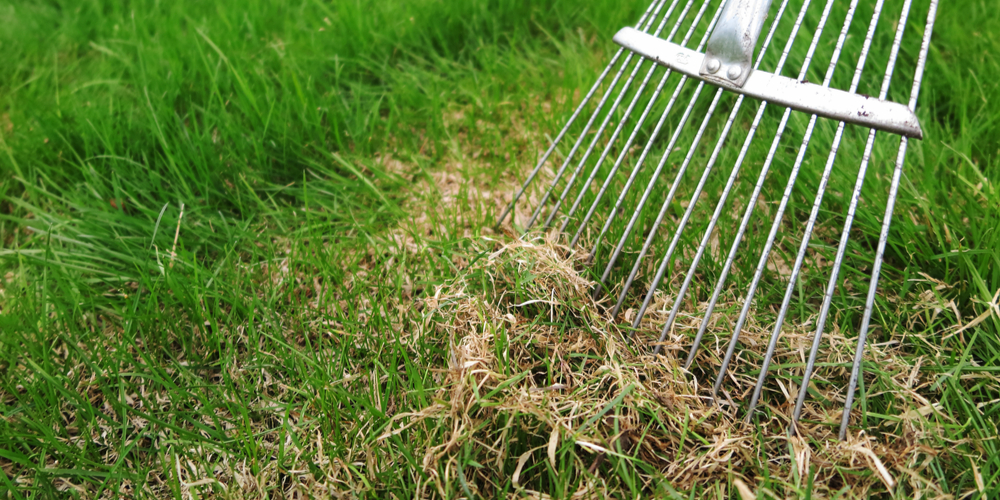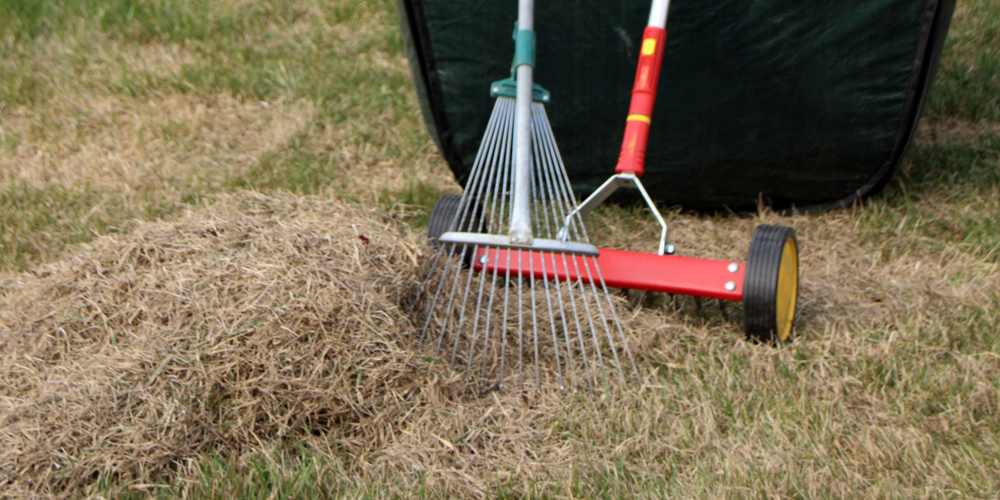Much like any other turf grass, Bermuda looks absolutely amazing when it’s free of weeds and debris. A big part of maintaining a lush and healthy lawn is dethatching, a process where you remove grass stems, rhizomes, and root materials on the ground.
Bermudagrass lawn owners usually ask, ‘when to dethatch Bermuda?’, and ‘how do you get rid of thatch in Bermuda?’ We’ll cover these two essential bermuda grass maintenance routines below.
When to Dethatch Bermuda Grass?
Dethatching is an important part of maintaining a Bermuda turf. The grass’ stems and roots tend to stay far longer compared to other types. Too thick a buildup usually leads to the lawn choking and eventually dying.
Lawn owners should constantly monitor their grass for buildup and remove the thatch as necessary. Too much unwanted plant material can lead to yellowing blades, thin and stunted growth, and reduced resistance to heat and cold.
That said, the best time to dethatch Bermuda grass is when it’s actively growing. Specifically, you should time it anywhere from late spring to early summer and after the last risk of frost has passed. You wouldn’t want to hurt or weaken new growth when sudden frost hits, so it’s better to wait until then.
Bermuda grass is rated hardy in zones 7 through 11, and if you live in regions where your grass goes dormant then it’s recommended that you wait a month after spring arrives to do the cleanup. In areas where bermuda stays green, the best time to dethatch will be in March.
It’s worth noting that you shouldn’t dethatch bermuda while it’s in a dormant phase or when you notice that it doesn’t grow as vigorously. Also, you should dethatch when the layer is about half an inch or thicker as a small amount of thatch is actually beneficial, temperature resistance and weed-wise.
How to Dethatch Bermuda Grass
Here’s a short step-by-step guide on how you can effectively dethatch your bermuda.
Check If You Need to Dethatch
Signs of excessive thatching include slowed growth and a spongy or springy lawn feel. You can take a 3-inch sample and measure the thatch accumulation using a ruler. If it’s at least half an inch thick, then you should dethatch your bermuda turf.
Mow and Irrigate
Before you do any dethatching it’s best to mow the lawn at a shorter height than usual. Bring out the mower and set it to a height of an inch, then run it through the lawn and make sure to cover every inch.
Afterward, you should lightly irrigate your lawn using a garden hose or a sprinkler system. This softens the plant material so the dethatching tool or equipment works better at catching them.
Choose Your Dethatching Tool or Machine
To dethatch bermuda you can use a power rake, a dethatching machine, or a regular leaf rake. Each tool has its pros and cons, but generally speaking, you can make do with an old-fashioned hand-pulling using a basic gardening tool.
Work out a horizontal and vertical pattern that covers all the areas on your lawn, then proceed to follow through. You can dethatch in two passes (the horizontal and vertical) and not have to repeat to save time and effort.
Afterward, the debris will be visible- use a rake to pull them out or get them together, then you can bag and dispose of them properly. Alternatively, you can use the plant material and turn them into organic compost for your other plants or trees.
Follow machine instructions to dethatch properly. For a leaf rake, it’s recommended that you dig deep, but not too deep as to damage the bermuda stolons. You can use a leaf blower to get the material off your lawn or group them together for proper disposal.
Water and Fertilize
Once the excess grass material is cleared up you’ll have a neater-looking lawn. Your bermudagrass will be healthier too as they can get full access to nutrients, water, and sunlight.
Once you’ve finished dethatching bermuda you can lightly water your turf again to minimize the stress. If you have extra time you can feed your bermudagrass with fertilizer to support its growth. Make sure to follow the instructions on the fertilizer label so you won’t overfeed and possibly damage your lawn.

